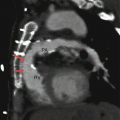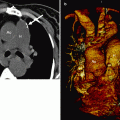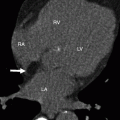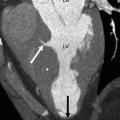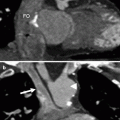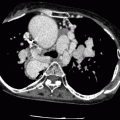, Marilyn J. Siegel2, Tomasz Miszalski-Jamka3, 4 and Robert Pelberg1
(1)
The Christ Hospital Heart and Vascular Center of Greater Cincinnati, The Lindner Center for Research and Education, Cincinnati, OH, USA
(2)
Mallinckrodt Institute of Radiology, Washington University School of Medicine, St. Louis, Missouri, USA
(3)
Department of Clinical Radiology and Imaging Diagnostics, 4th Military Hospital, Wrocław, Poland
(4)
Center for Diagnosis Prevention and Telemedicine, John Paul II Hospital, Kraków, Poland
Abstract
Until the mid-1990s, the standard surgical approach to repair congenitally corrected transposition of the great arteries was repair of the associated lesions (ventricular septal defect and pulmonary stenosis or atresia), allowing the right ventricle to remain as the systemic pump. Since this approach has a high prevalence of complications, surgical correction is now advocated in early childhood (several months to a few years of age). Correction is achieved with the double-switch procedure which uses a combination of the atrial switch and arterial switch surgeries previously described in Chaps. 23 and 24 [1–3]. Either a Mustard or Senning procedure is performed followed by either a Jatene switch or Rastelli-type procedure. The result of this operation is anatomically correct anatomy and removal of the systemic pressure load from the right ventricle. See Figs. 28.1 and 28.2.
Until the mid-1990s, the standard surgical approach to repair congenitally corrected transposition of the great arteries was repair of the associated lesions (ventricular septal defect and pulmonary stenosis or atresia), allowing the right ventricle to remain as the systemic pump. Since this approach has a high prevalence of complications, surgical correction is now advocated in early childhood (several months to a few years of age). Correction is achieved with the double-switch procedure which uses a combination of the atrial switch and arterial switch surgeries previously described in Chaps. 23 and 24 [1–3




Stay updated, free articles. Join our Telegram channel

Full access? Get Clinical Tree


